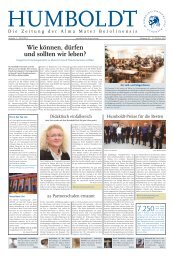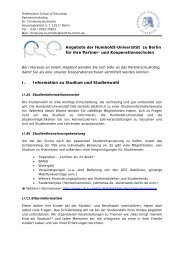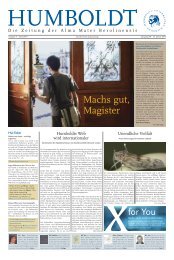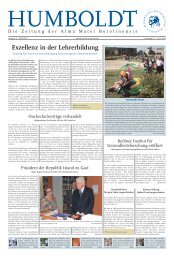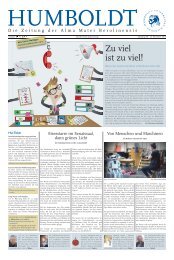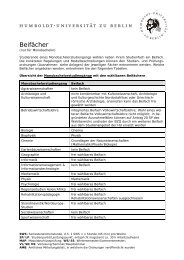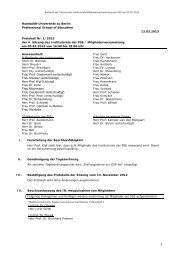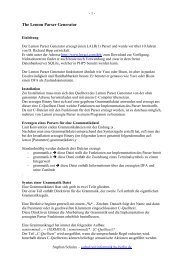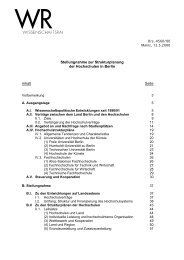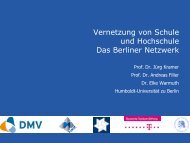hu wissen 3 (pdf) - Humboldt-Universität zu Berlin
hu wissen 3 (pdf) - Humboldt-Universität zu Berlin
hu wissen 3 (pdf) - Humboldt-Universität zu Berlin
Erfolgreiche ePaper selbst erstellen
Machen Sie aus Ihren PDF Publikationen ein blätterbares Flipbook mit unserer einzigartigen Google optimierten e-Paper Software.
A disease is said to be rare if it affects less than five in 10,000 of<br />
the general population. However, around four million people suffer<br />
from these diseases in Germany alone. Many develop them as<br />
infants or children, but it is also possible for adults to suddenly<br />
contract rare diseases. »A major problem for patients is getting<br />
the right diagnosis,« says Stefan Mundlos, Professor and Director<br />
of the Institute of Medical Genetics and Human Genetics at the<br />
Charité – Universitätsmedizin <strong>Berlin</strong>, who offers consultations<br />
specifically for patients with rare diseases at Charité - Campus<br />
Virchow Klinikum (CVK). The problem is that »doctors are oen<br />
baffled by these diseases and patients are not taken seriously, meaning<br />
it can take years for them to find out what they have.«<br />
Rare diseases oen affect several organ systems at the same<br />
time, making diagnosis particularly difficult. They range from<br />
brain development disorders to heart defects, from stunted<br />
growth to neurological diseases and to rare metabolic illnesses.<br />
Basically, all organs can be affected. »Modern medical techniques<br />
make it possible to provide most patients with a diagnosis,« says<br />
Mundlos. »This is important as it puts an end to their uncertainty<br />
and provides the information doctors need to start treatment.«<br />
For other rare diseases, Mundlos and his team have discovered<br />
the genetic cause. For example, Ondine syndrome is caused by a<br />
very rare genetic defect that leads to a congenital disease of the<br />
central nervous system. The child’s breathing is interrupted, especially<br />
during sleep, and some sufferers have to be constantly ventilated.<br />
»We have traced a mutation for the disease in one family,«<br />
says Mundlos, a specialist in <strong>hu</strong>man genetics. His team plan to<br />
use animal experiments to prove that it really is the mutation that<br />
causes the disease. They will create a »mouse copy« of the genetic<br />
mutation and then insert it into the mouse genome. This should<br />
make it possible to prove that this is, indeed, the true cause of the<br />
syndrome and also to develop and test new therapies for treating<br />
the syndrome and other rare diseases too, thereby steadily shortening<br />
the list of these medical orphans.<br />
MEDIZIN / MEDICINE<br />
23



